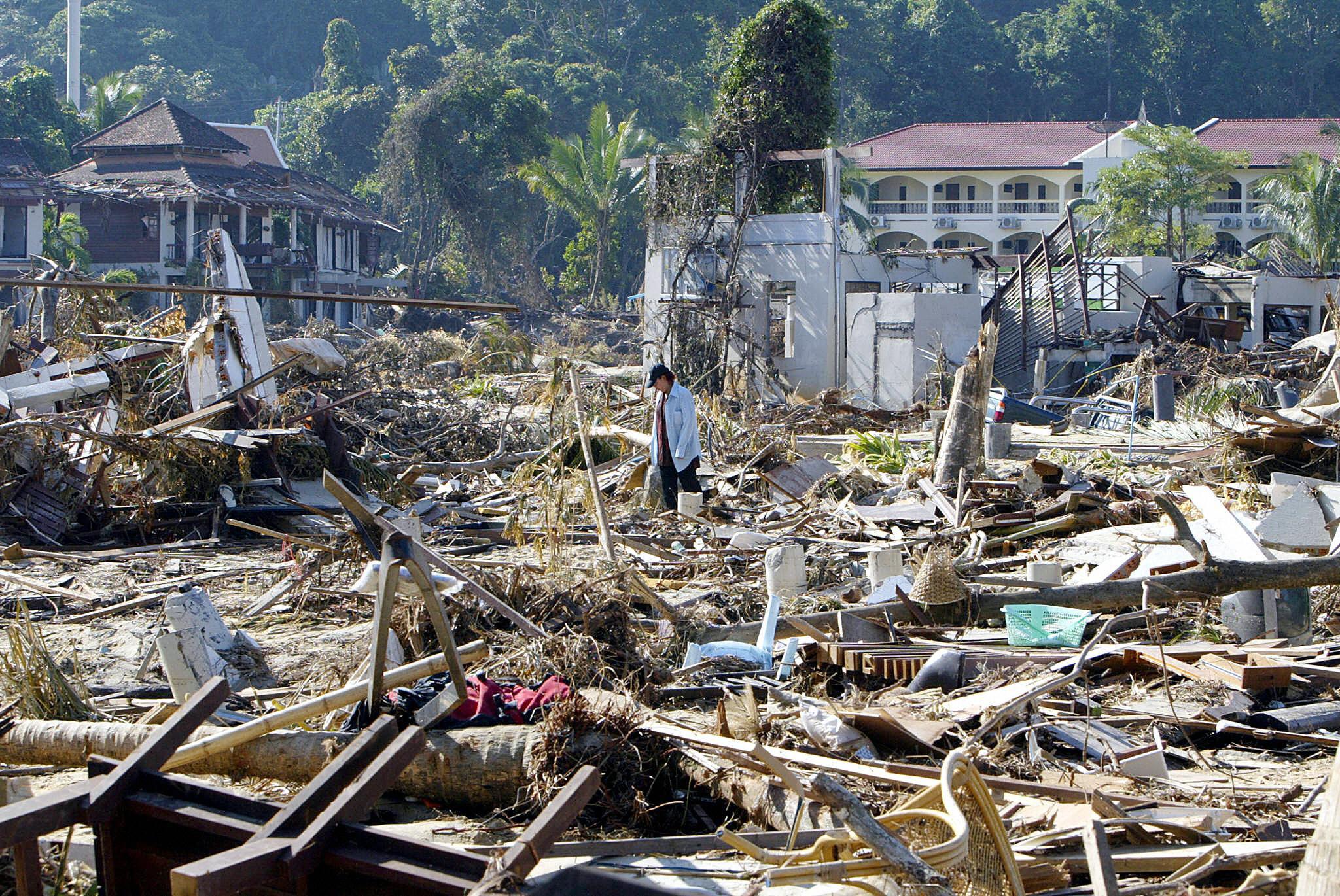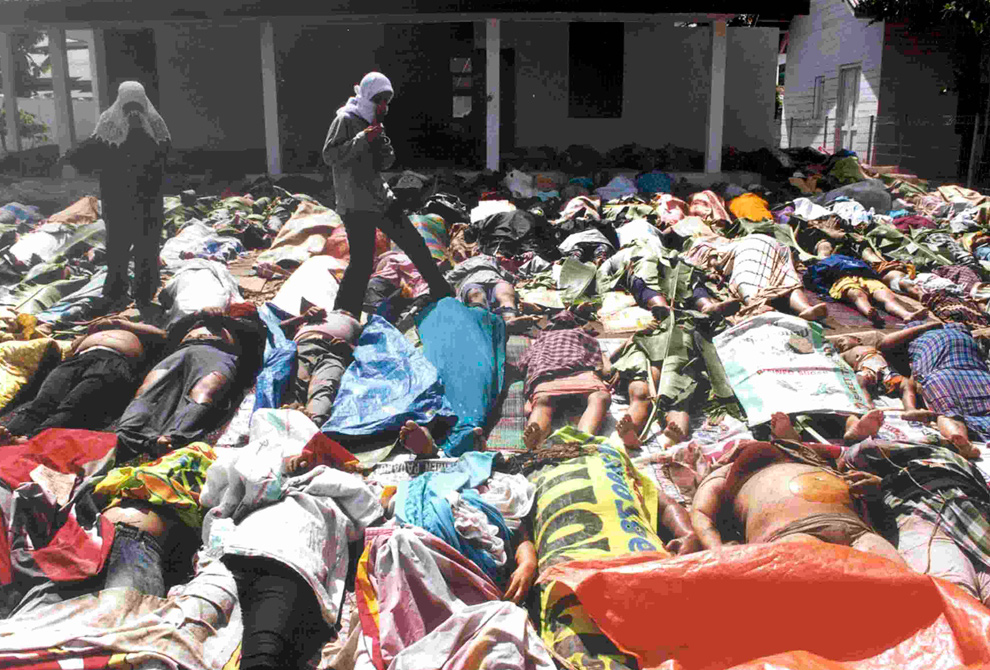The Indian Ocean Tsunami (also known as the ‘Boxing Day Tsunami’) was a catastrophic event that occurred on December 26th 2004.
At 07.58 local time an earthquake measuring 9.3 and lasting 8-10 minutes – the the longest in time and third largest in force ever recorded – struck in the ocean near Sumatra, Indonesia. The tsunamis this triggered struck at least 14 countries. It’s exact death toll is unknown, but general estimates range from 250 000 to 300 000+ people.
Foreshadowing Disaster
On November 2nd 2002 an earthquake measuring 7.3 hit near Sumatra, Indonesia. Only 3 people died. However, the movement of the plates had left them badly out of line.
The Scale of the Earthquake

The quake involved two ruptures of the earth’s surface: the first 400km long followed by another 100 seconds later. The area releasing energy was 160km long. The fault slipped 15m and it is believed the whole earth vibrated 1cm.
The one earthquake accounted for 1/8th of all seismic activity in the hundred years to that date. If added together, the Chilean earthquake of 1960, Alaskan earthquake of 1964, and Sumatra earthquake of 2004 accounted for 1/2 of seismic movement in the previous 100 years.
Timeline

00.58 GMT (07.58 Indonesia): The first earthquake strikes off Sumatra and is felt in several countries. It is initially measured at 8.9. Although there is a Pacific Tsunami Warning Center (PTWC), none of the countries in the region are a part of it.
01.00 – 01.30GMT (08.00-08.30 Indonesia): The tsunami hits north of Indonesia, including Banda Aceh. Tsunami waves also hit India’s Nicobar and Andaman Islands.
02.30 GMT: Beaches in Thailand are hit by the tsunami, killing locals and tourists.
03.00 – 03.23 GMT: The tsunami reaches India and Sri Lanka.
04.00 GMT: The Maldives is the next country hit by the wave.
07.00 GMT: The tsunami reaches its final countries on the east of Africa.
A Failure in Warning Systems

There were earthquake and tsunami warning centers set up around the Pacific, but they were run by developed countries and did not connect to the poorer nations that were hit. For most people the only warning they got before the wave was the sea retreating and divers reporting strong currents and no fish.
By the time the US system in Hawaii and the Australian system in the north of the country understood what was happening, the damage in Indonesia, Sri Lanka, India and Thailand had already been done.
Deaths and Damage

It is impossible to know the exact number of people who died because of the Indian Ocean Tsunami: the wide area the disaster hit, and the poverty of some of many areas, means there is some guesswork. For example, the US Geological Survey initially estimated 227 000 people died, but the Indonesian Government puts the death toll in Indonesia alone at 220 000.
A rough approximation of the death tolls per country is:
Indonesia: 168000
Sri Lanka: 35000
India: 18000
Thailand: 8000
Myanmar: 600
Somalia: 289
Maldives: 108
Several other countries suffered deaths.
The tsunami also resulted in widescale environmental destruction, with habitats destroyed, plantations lost, drinking water contaminated, and waste and chemicals spread over a large area. It is impossible to know the damage to animal life and ecosystems in the area.
Rebuilding and Continued Threat
International aid poured into the region to help the humanitarian effort. However it will take generations to rebuild the areas and families hit.
In 2005 the plates near Sumatra moved again – causing an 8.7 quake, the 7th largest since 1900.